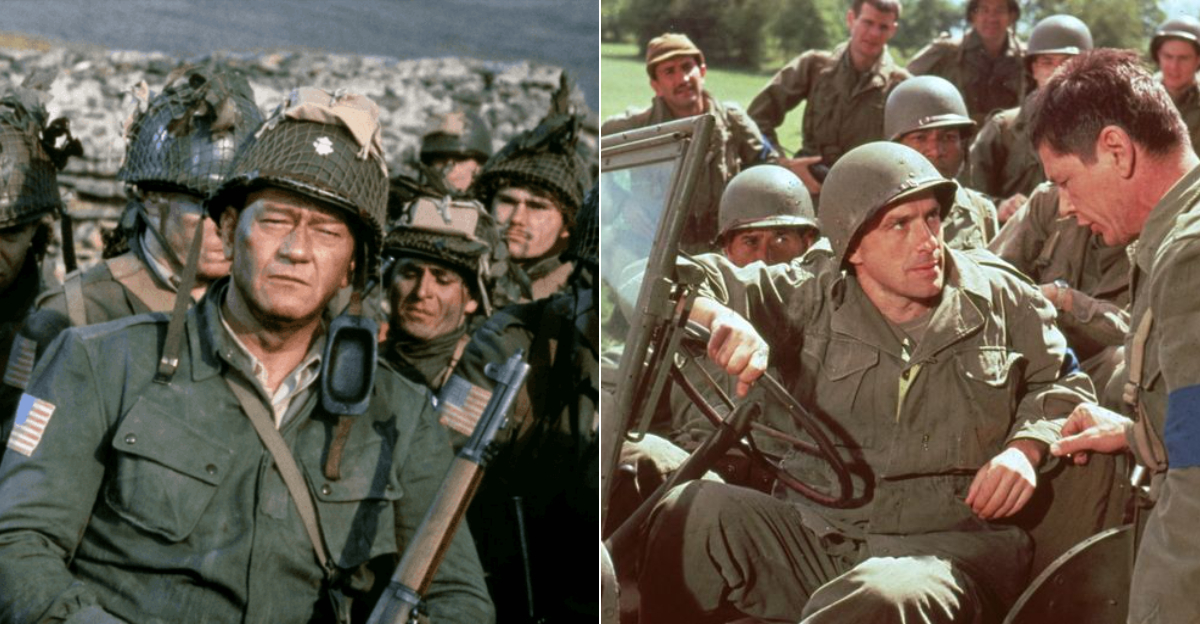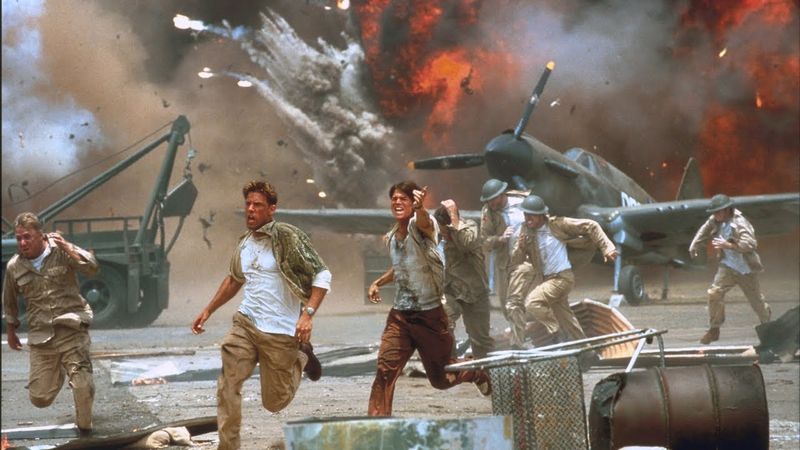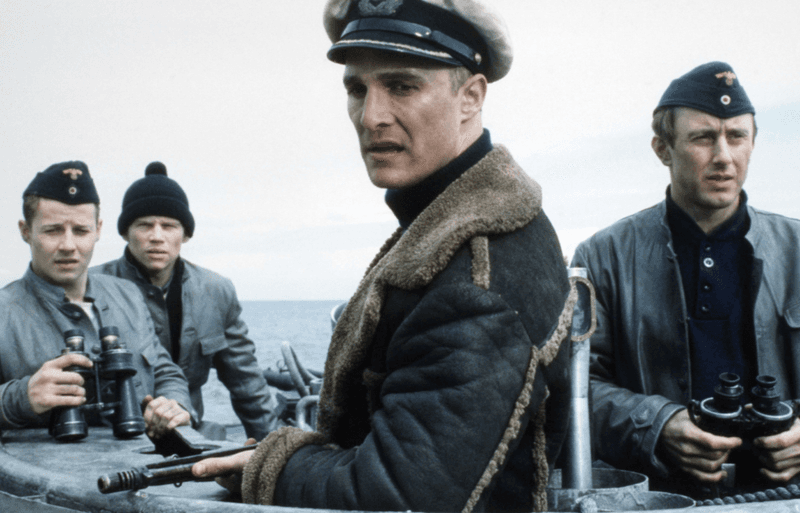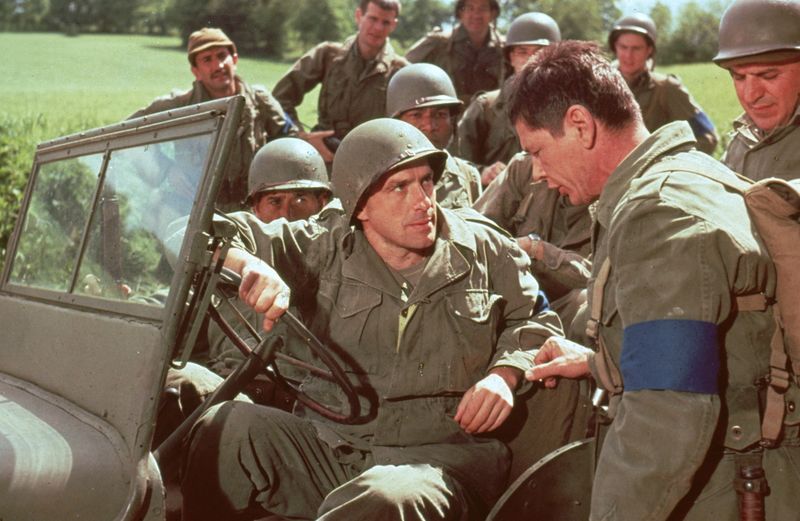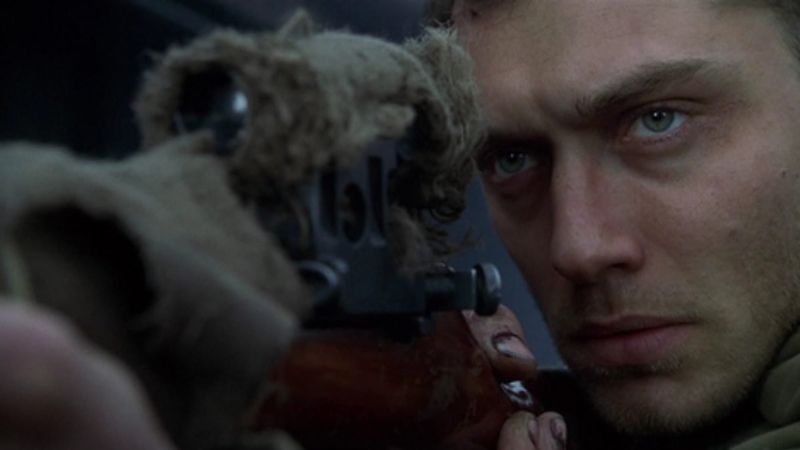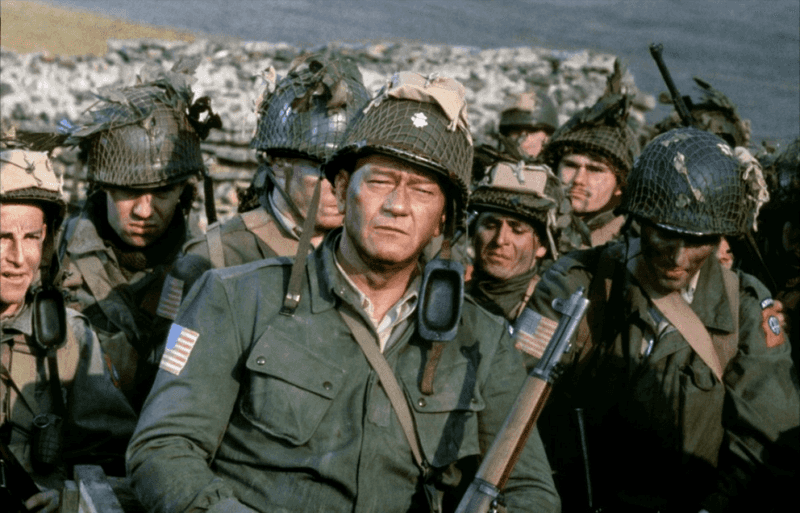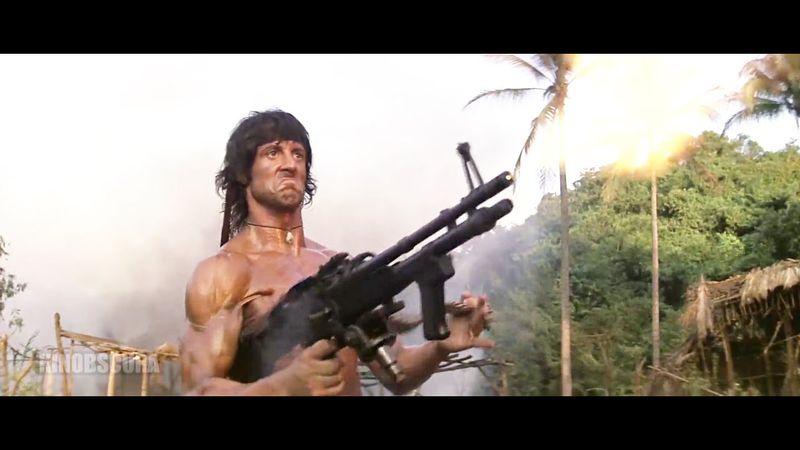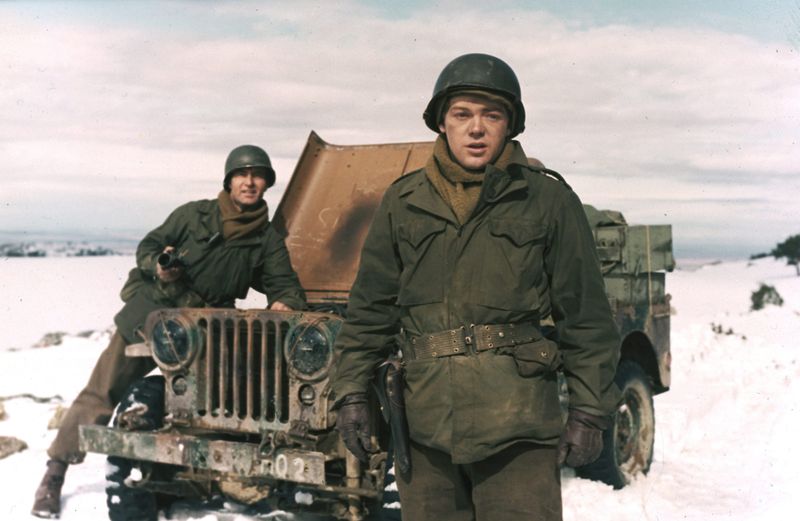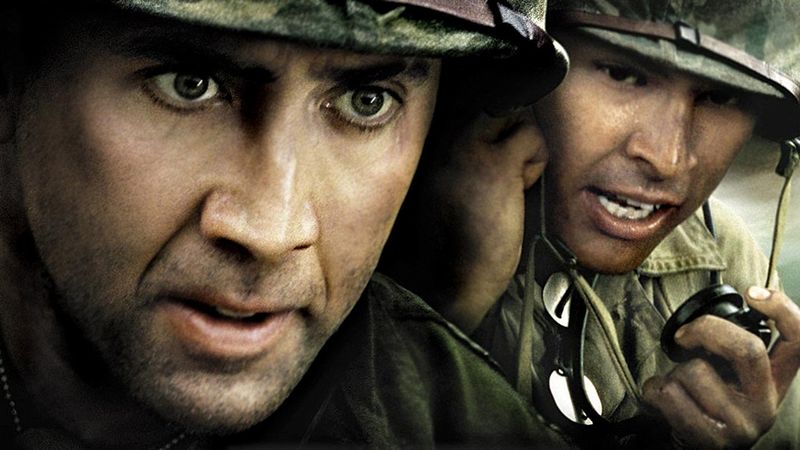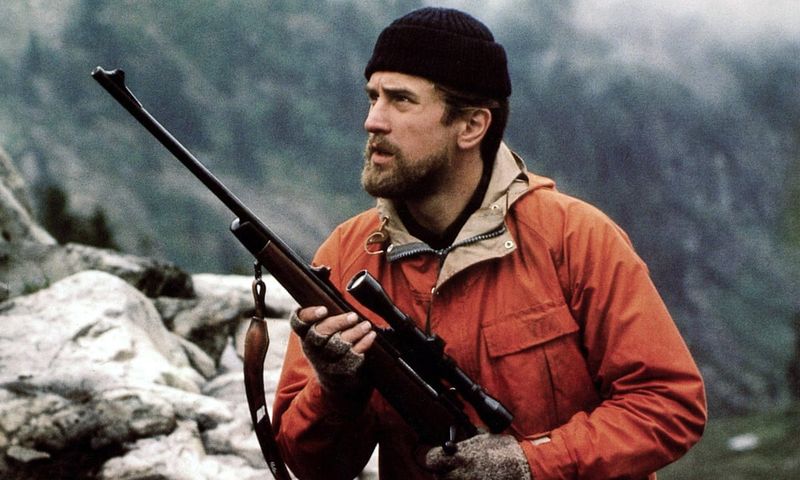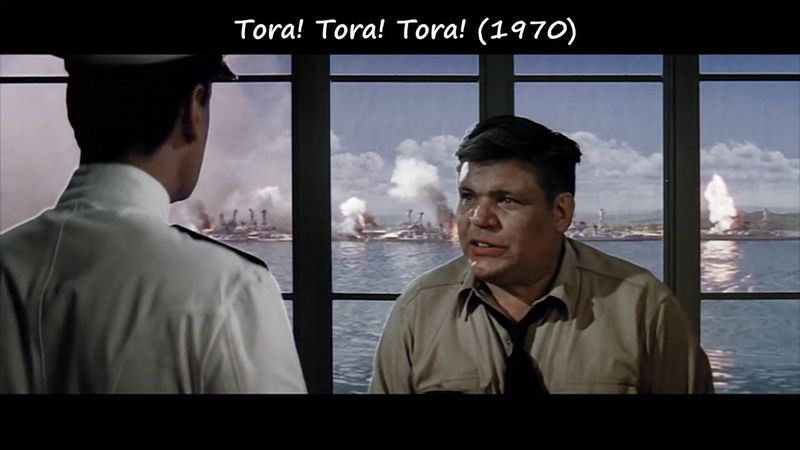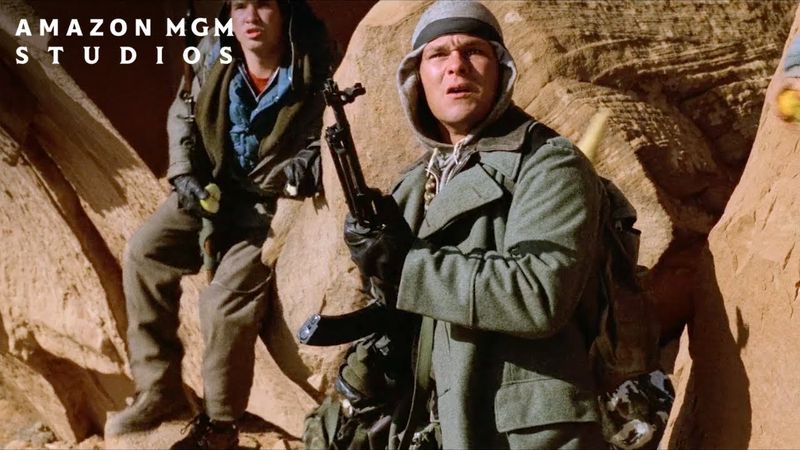War movies often reflect the era in which they were made. These 12 films, once celebrated or at least acknowledged, now stand as examples of how cultural perspectives and societal values can shift with time. Here, we explore why these once-popular war films haven’t aged gracefully.
1. The Green Berets (1968)
In the realm of Vietnam War cinema, few films are as jingoistic as “The Green Berets.” John Wayne leads a charge of oversimplified politics and cartoonish heroics. The Viet Cong are mere shadows of villainy, one-dimensional and without nuance.
This film serves as a relic of Cold War Hollywood, where U.S. involvement was glorified without question. The narrative is steeped in propaganda, making it feel more like a dream of war rather than a reality. Its simplistic portrayal struggles to resonate in today’s complex world view.
2. Pearl Harbor (2001)
“Pearl Harbor,” directed by Michael Bay, is remembered more for its melodrama than its historicity. A love triangle distracts from the gravity of war, overshadowing the infamous attack itself.
The film’s CGI-heavy battle scenes were once groundbreaking, but now they appear dated and lack the authenticity audiences crave. Dialogue that leans into clichés and awkward moments further dampens its impact, making it cringe-worthy by today’s cinematic standards.
3. U-571 (2000)
“U-571” dives deep into controversy by rewriting WWII history. Americans, not the British, are shown capturing the Enigma machine, sparking outrage and even parliamentary condemnation.
The film is a thrilling ride but loses credibility due to its fictional liberties. It serves as a reminder of the importance of historical accuracy, especially when depicting events of global significance. Audiences today expect more responsibility in storytelling.
4. The Dirty Dozen (1967)
“The Dirty Dozen” remains an action classic, yet its portrayal of violent convicts as heroes raises eyebrows today. The film glorifies their misogynistic tendencies, creating a tonal dissonance for modern viewers.
Particularly jarring is the infamous “greased German women” sequence, which feels deeply uncomfortable now. The film’s legacy as a thrilling ride is nonetheless complicated by its outdated moral compass.
5. Enemy at the Gates (2001)
Set during the Battle of Stalingrad, “Enemy at the Gates” grips viewers with intense sniper duels. However, it stumbles with historical inaccuracies such as the myth of Soviet “blocking detachments.”
The Hollywood-style romance feels out of place amidst the grim wartime setting. While the film captures the essence of human conflict, its deviations from reality detract from its authenticity, making it a less reliable historical account.
6. The Longest Day (1962)
“The Longest Day” was a landmark in war epics, featuring an ensemble cast for its time. Yet, its perspective is glaringly one-sided, focusing solely on the Allies.
German and French narratives are mere stereotypes, causing a lack of depth. The acting feels old-school and stiff, further distancing it from contemporary audiences who crave multifaceted storytelling.
7. Rambo: First Blood Part II (1985)
In “Rambo: First Blood Part II,” the hero single-handedly battles through Vietnam, rewriting history with explosive flair. Its hyper-patriotic narrative and cartoonish violence have not aged well.
The film’s portrayal of Vietnamese characters as mere caricatures adds a layer of discomfort. While an ’80s action staple, its politics and depictions feel out of step with today’s sensitivities.
8. Battle of the Bulge (1965)
“Battle of the Bulge” struggled with accuracy even upon release. Filmed in sunny Spain, it starkly contrasts the snowy Belgian front depicted in the actual battle.
The use of post-war tanks that didn’t exist in 1944 further strains its credibility. This film’s ambitious scope is hindered by geographical and historical missteps, leaving it as a curious but flawed representation of WWII.
9. Windtalkers (2002)
“Windtalkers” had the potential to highlight the bravery of Navajo code talkers. Instead, Nicolas Cage’s character overshadows them with a white savior narrative.
Excessive violence detracts from the story’s core message, sidelining the very heroes it sought to honor. This missed opportunity limits the film’s impact, reducing it to a standard war drama rather than a groundbreaking tribute.
10. The Deer Hunter (1978)
“The Deer Hunter” is lauded for its performances but falters with its infamous Russian Roulette scenes. Entirely fictional, these moments perpetuate stereotypes of Vietnamese cruelty.
Vietnam veterans criticized the film, calling it exploitative. Despite its dramatic reputation, these controversial elements overshadow its achievements, complicating its place in war film history.
11. Tora! Tora! Tora! (1970)
“Tora! Tora! Tora!” chronicles the Pearl Harbor attack with technical precision, yet it lacks emotional resonance. The wooden dialogue and stiff performances make it feel like a history lecture.
Though impressive in scale, its absence of emotional depth leaves a void that modern audiences find hard to fill. The result is a film more appreciated for its historical context than its storytelling.
12. Red Dawn (1984)
“Red Dawn” captures Cold War paranoia through teenage guerrillas facing Soviet invaders. Its over-the-top action is now more meme-worthy than compelling.
The 2012 remake, shifting villains to North Korea, only enhanced its silliness. Originally a product of its time, the film’s exaggerated fears have not weathered the test of time, becoming more of a nostalgic relic.
